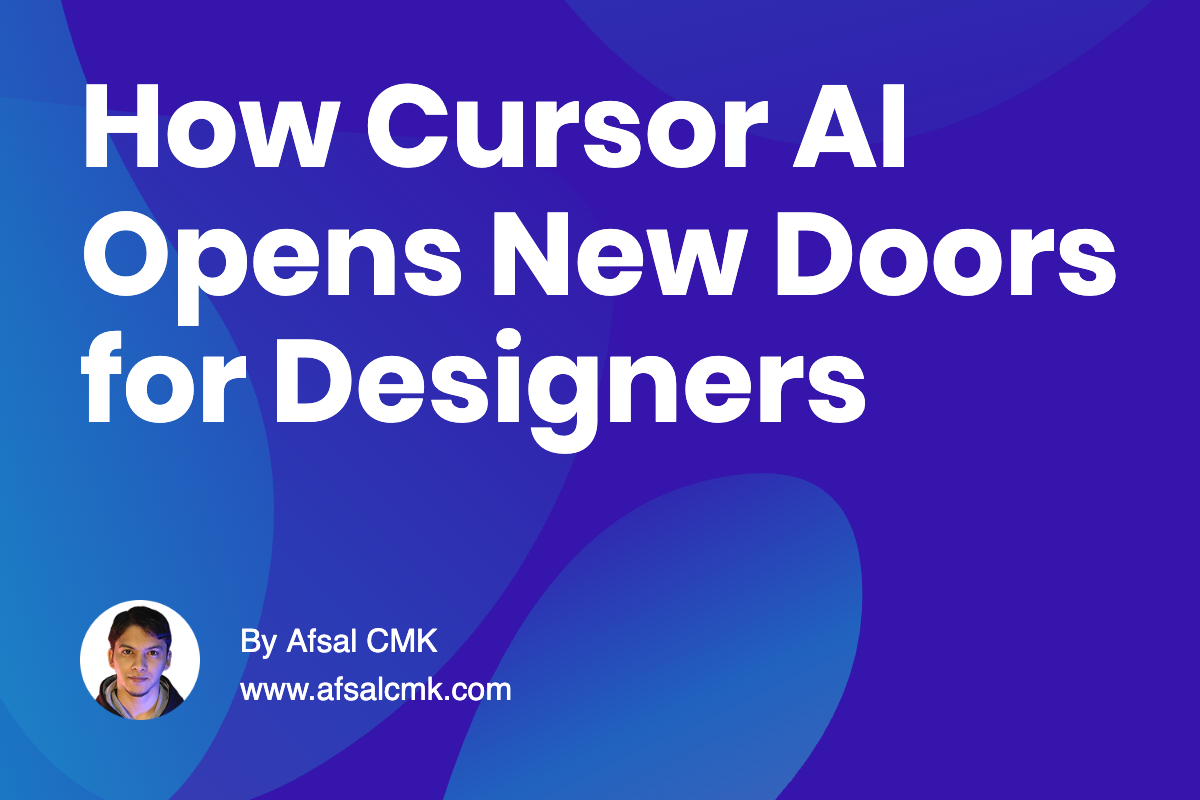
How Cursor AI Opens New Doors for Designers
I’ve been thinking a lot about how AI tools are crossing the line from developer-only territory into the design realm. One tool in particular-Cursor AI-caught my attention. Although it’s often talked about as a “code editor with AI,” for designers working in the SaaS world it signals something more: a bridge between design intent and rapid product delivery.
Here’s how I see it creating new possibilities for designers in SaaS environments:
1. Faster prototyping and iteration. With Cursor AI, designers can sketch out ideas and see them evolve into more functioning prototypes quickly. The translation between design and execution becomes shorter. This accelerates feedback loops, letting design decisions land sooner and reducing the waiting around while engineers build the first draft.
2. Closer alignment with implementation. SaaS products carry many layers-UI, interaction logic, state management, performance concerns. When designers have tools that understand code context (which Cursor does) they gain better insight into what’s feasible, scalable, and maintainable. It narrows the gap between “this looks good” and “this can ship.”
3. More autonomy for design-led features. In many SaaS teams, design features often wait in queue behind heavy engineering tasks. With AI-augmented tools, designers can explore versions of functionality themselves, reducing dependency on engineering cycles. It means more creative control and faster validation of ideas.
But it’s not all smooth sailing. Some cautionary points matter:
– Even though Cursor AI boosts speed, it doesn’t replace deep design thinking. A well-designed SaaS product still needs thoughtful flows, user research, and strategic vision.
– With great velocity comes risk. Building quickly doesn’t guarantee build correctly. For SaaS-especially ones with user data, integrations, scale-designers must remain aware of security, performance, accessibility, and long-term maintenance.
From a leadership or mentorship perspective, I’ve learned to advise designers to adopt tools like Cursor AI as support rather than substitute. Use AI for rapid scaffolding, experimentation, and exploring edge cases-but still hold space for the craft. Continue to ask: “Does this change scale? How will it perform under load? What happens in error states?”
In practice, I encourage design teams to add workflows like: generate prototype > review feasibility > refine design > hand-off with code context. That sequence keeps creativity alive while leveraging AI speed. The result? SaaS design that is more responsive, more aligned with engineering, and easier to iterate.
Ultimately, what I see is a shift in what design leadership looks like in a SaaS world. It’s less about handing off visuals and more about owning the full product layer-from UI to interaction to logic. Tools like Cursor AI help make that shift tangible. They don’t remove design skill-they amplify it.
So if you are in a SaaS product team and wondering whether to embrace AI tools like Cursor AI-my advice is: yes, absolutely. But do it with vision, discipline, and a mindset of craft. Because the technology will keep evolving; what remains uniquely human is the ability to shape things people want, trust, and love to use.